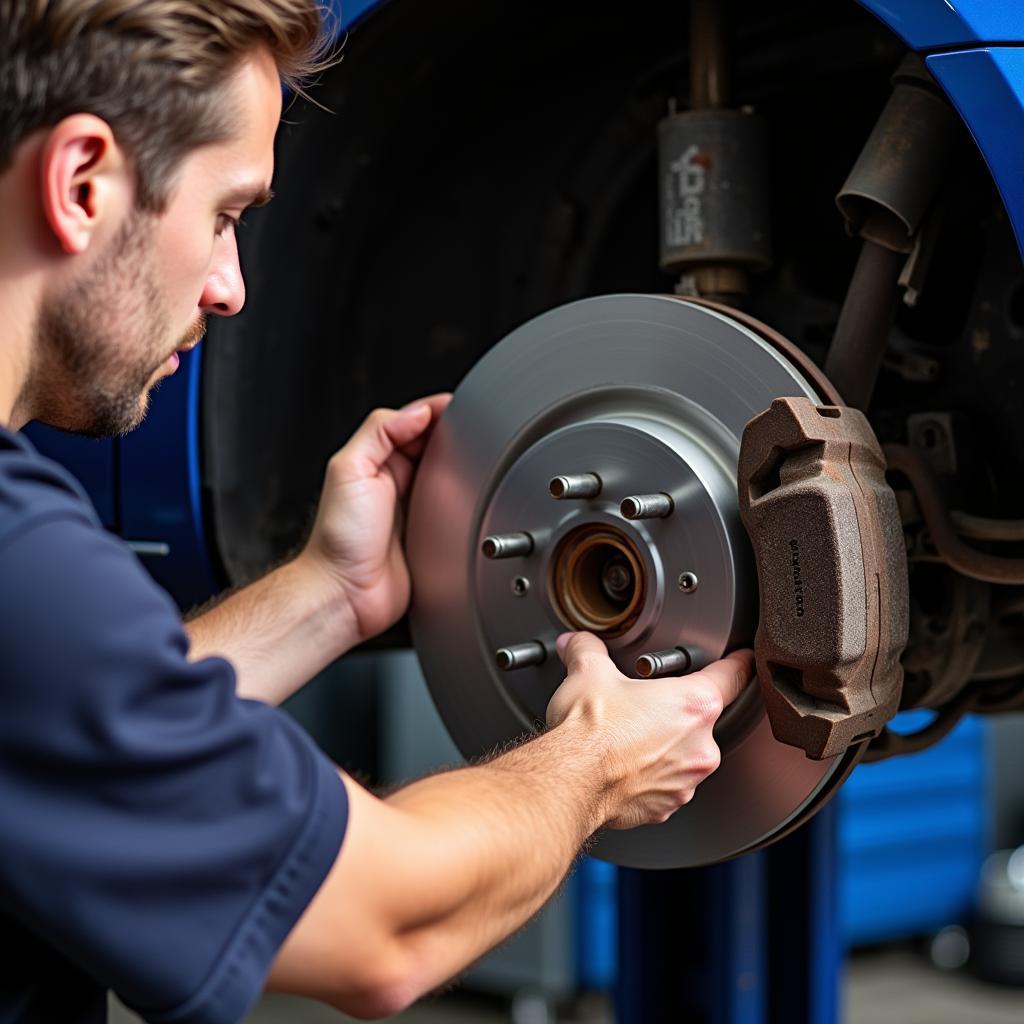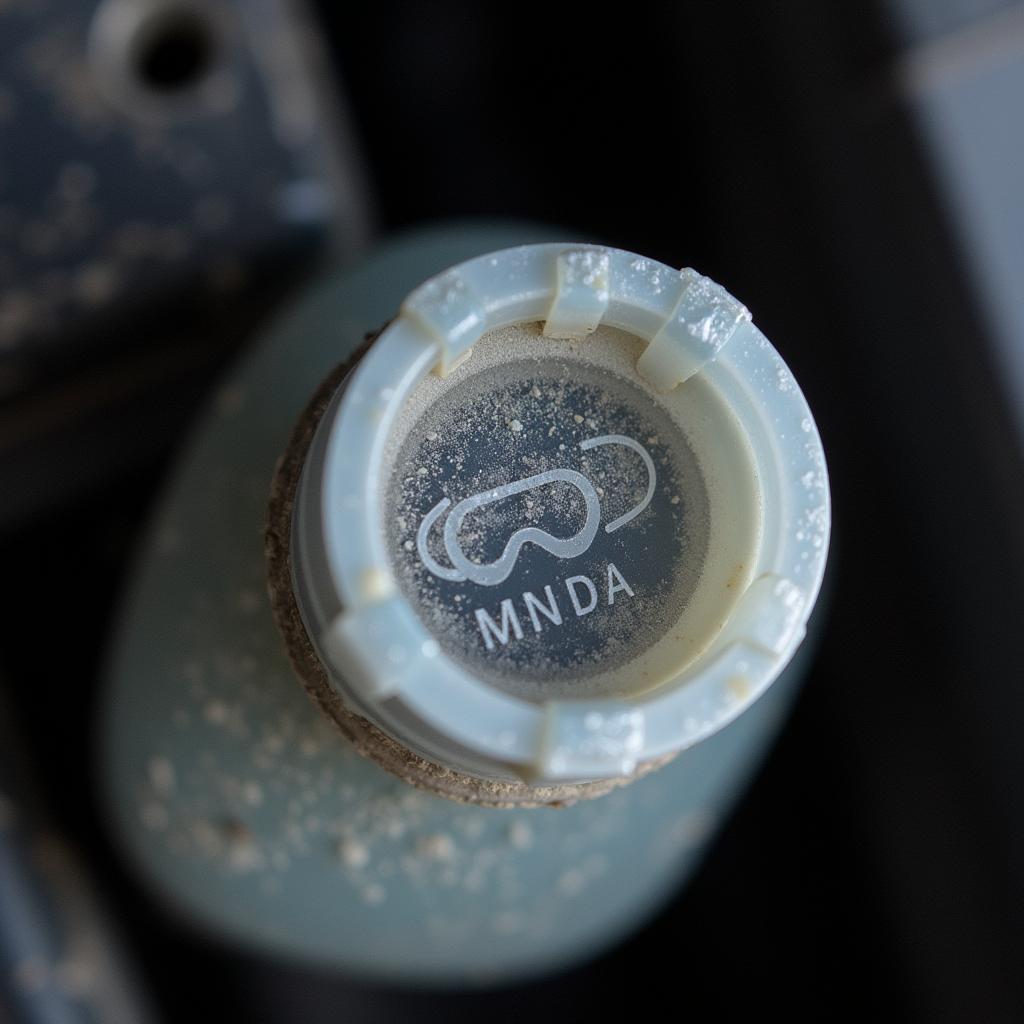The brake pad warning indicator is a crucial safety feature in your vehicle. It alerts you when your brake pads are worn down and need replacement. Ignoring this warning light can lead to costly repairs and, more importantly, compromise your safety on the road. This comprehensive guide will delve into the intricacies of the brake pad warning indicator, explaining its function, common causes, and the necessary steps to address the issue.
Understanding the Brake Pad Warning Indicator
 Brake Pad Warning Light on Dashboard
Brake Pad Warning Light on Dashboard
The brake pad warning indicator light is typically a symbol that illuminates on your dashboard, often resembling a circle with parentheses on either side and an exclamation mark in the center. When the brake pad friction material wears down to a certain level, a circuit is completed, triggering the warning light. This serves as a visual cue for the driver to inspect their brakes and consider replacement.
Common Causes of a Brake Pad Warning Indicator
Worn Brake Pads
The most frequent cause of the brake pad warning light is, unsurprisingly, worn-out brake pads. As you apply the brakes, the friction material on the pads gradually wears down. When the material reaches a critically low level, the indicator light activates.
Faulty Brake Pad Sensor
In some vehicles, a sensor embedded within the brake pad itself detects wear. If this sensor malfunctions or becomes damaged, it can trigger the warning light prematurely, even if your brake pads are still in good condition.
Issues with Brake Fluid
While not directly related to brake pad wear, low brake fluid levels can also trigger the brake pad warning light in some vehicles. This is because the brake system shares a common warning light for both brake pad wear and brake fluid levels.
Electrical Problems
Occasionally, a short circuit, loose wiring, or other electrical gremlins within the brake system can cause the warning light to illuminate erroneously.
What to Do When the Brake Pad Warning Indicator Illuminates
 Mechanic Inspecting Brake Pads
Mechanic Inspecting Brake Pads
Don’t Panic, But Don’t Ignore It
Seeing the brake pad warning light doesn’t necessarily mean you need to slam on the brakes and call a tow truck. However, it’s crucial not to ignore the warning. Continuing to drive with worn brake pads can lead to further damage, increased stopping distances, and potentially dangerous situations.
Schedule an Inspection
As soon as possible, schedule an inspection with a trusted mechanic or a qualified technician. They can assess the condition of your brake pads, determine the root cause of the warning light, and recommend the appropriate course of action.
Brake Pad Replacement
If the inspection reveals that your brake pads are indeed worn, it’s essential to have them replaced promptly. Driving with worn brake pads not only compromises your safety but can also damage the brake rotors, leading to more extensive and costly repairs down the line.
Addressing Other Issues
If the inspection determines that the warning light is not due to worn brake pads, the mechanic will diagnose and address the underlying issue, whether it’s a faulty sensor, low brake fluid, or an electrical problem.
Can I Drive with the Brake Pad Warning Light On?
While you can technically drive a short distance with the brake pad warning light on, it’s strongly advised against. The longer you drive with worn brake pads, the greater the risk of further damage to your braking system and the higher the chance of experiencing brake failure.
How Often Should I Replace My Brake Pads?
Brake pad lifespan varies considerably depending on driving style, vehicle type, and driving conditions. As a general rule of thumb, it’s recommended to have your brake pads inspected every 12,000 miles or annually, whichever comes first.
Preventive Measures to Extend Brake Pad Life
You can extend the lifespan of your brake pads and enhance your safety by adopting a few preventive measures:
-
Anticipate Stops: Avoid harsh braking whenever possible. Anticipate stops and gradually slow down instead of slamming on the brakes.
-
Maintain Consistent Speed: Frequent acceleration and braking put extra strain on your brake pads. Maintaining a consistent speed, especially in traffic, can help prolong their lifespan.
-
Lighten the Load: Carrying excessive weight in your vehicle puts additional stress on your braking system. Try to travel light whenever possible.
Conclusion
The brake pad warning indicator plays a vital role in maintaining your vehicle’s safety and reliability. Understanding its significance and responding promptly to its warnings can help you avoid costly repairs, extend the life of your brake system, and most importantly, ensure a safe driving experience. If your brake pad warning light illuminates, schedule an inspection with a qualified technician without delay to diagnose and address the issue.

